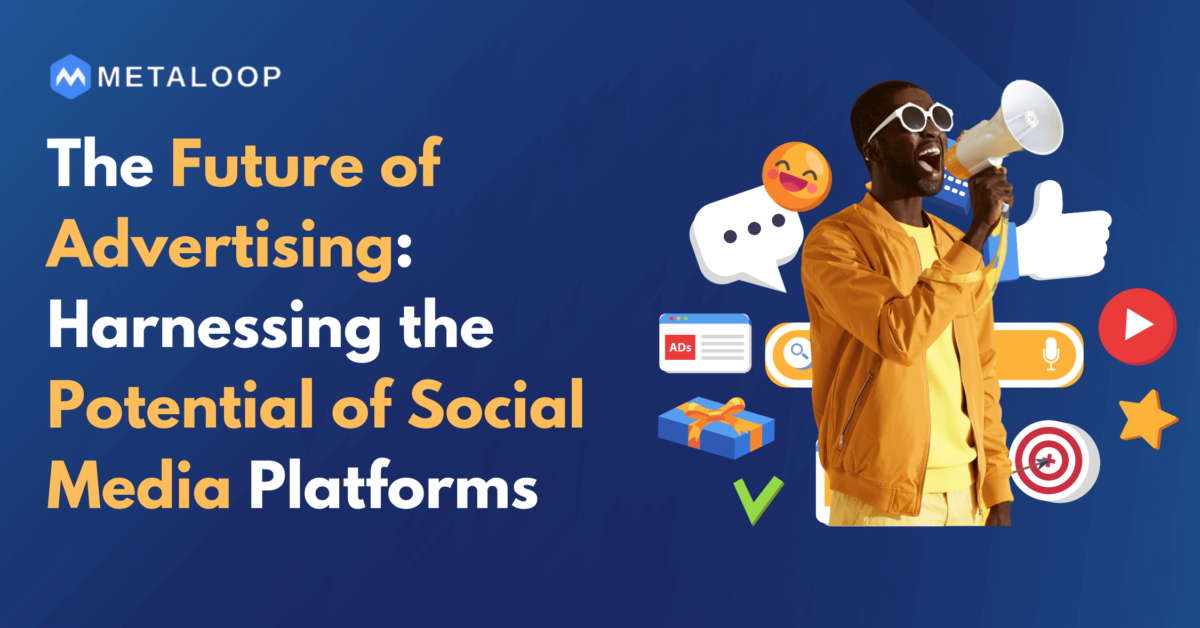The Future of Advertising: Harnessing Potential of Social Media Platforms
For years now, the advertising industry has been shifting towards a more data-centric approach. More accuracy was possible in the collection, sifting, and use of data thanks to new internet technologies. Because of this, any consideration for user privacy has been abandoned in the quest of precision in targeted advertising.
But there was a shift in digital marketing when browsers started introducing more user-oriented privacy settings. Third-party cookies were made the antagonist of the plot, and digital advertising began to change drastically.
The death of device ID
For many years, Device ID has served as the foundation of digital advertising trends. After all, the vast majority of people utilize mobile devices, and they are typically carried with them at all times. There has never been a better method to learn about someone’s routines, preferences, and dislikes.
In the past, advertising mainly depended on device IDs to monitor customer sales, downloads, and browsing patterns. But given the outcomes of Apple’s decision to give people an option, that will need to be altered. From iOS 14.5 up, users have to opt in (rather than opt out) to be tracked by every single app they have installed on their devices. As it turns out, the monthly opt-in rate has not exceeded 25%.
Since then, there’s been a shift in advertiser spending toward Android devices. Many marketers have been forced to explore alternatives as a result of losing granular data.
The Renaissance of contextual targeting
Behavioral data is steadily becoming harder to obtain. Because of growing restrictions and expanding privacy controls for users, the data supply chain is breaking down. So how can advertisers make sure that their ads are reaching the desired audience?
There are several methods for negotiating the cookie-free, privacy-conscious market. However, one of them clearly has a durability edge. That’s contextual targeting.
Furthermore, displaying advertising in the appropriate context guarantees that readers are viewing advertisements for things they are actively learning about, even when browsing histories might be inaccurate (as is the case with shared devices or ads for a product appearing years after the product has been purchased).
Even while depending on data, and particularly third-party cookie data, used to be thought of as the most effective technique of targeting, it has never been apparent if it is effective.
The price they’re willing to pay, however, is disproportionate.
User experience comes first
Cookies are going away because consumers are fed up with them. Digital advertising goes to tremendous efforts to deliver the most precisely targeted adverts. Many users reported feeling monitored and even heard.
So how can the advertising market change to accommodate the needs of consumers?
There are other actions that need to be performed to create a positive customer experience in addition to the previously described option, contextual advertising. People hate to be interrupted. They find it uncomfortable to be followed, and they prefer shopping on apps to websites.
It has been found that consumers use emotions rather than information when evaluating a brand. Purchase decisions are driven by likeability, not by truth, accuracy, or the product’s purported superiority. Therefore, innovation and non-intrusiveness will be key components of advertising in the future. Over 50% of respondents found the auto-playing video and audio advertisements on music streaming services to be unpleasant. These are not the recommended strategies for 2022.
Advertising and seamless experiences can go hand in hand. For instance, direct partnerships and in-app mobile advertising should perform better than interstitial advertising. Additionally, in-game advertising is still another choice for non-disruptive ad display, maybe in a setting with contextual relevance. The most reliable kind of advertising, however, were case studies and research.
Brand safety is an indispensable part of digital advertising
Brand safety is a current problem that is receiving more attention as societal disputes and problems multiply.
Every marketer is actively attempting to avoid presenting advertising in a setting that fosters unfavourable associations as part of a positive user experience. And while most advertising platforms are doing their best to adhere to brand safety standards, the advertising dollars of big brands will flow towards the most brand-safe options. And so should yours.
There are several strategies to keep internet advertisements in a secure and appropriate location.
- Whitelisting and blacklisting keywords in contextual advertising allow brands to narrow down the context in which the ads appear. Companies can ban terms that have inherent bad implications as well as those that don’t fit the brand’s ethos.
- Complete control over the ad space and its context is possible through private transactions and purchasing straight from a publication. In that case, the quality of the ad space depends on the publisher. As long as there is a proper context moderation system in place, direct access to the publisher’s inventory can provide the most value.
- Of course, brand-safe ad formats are the best option. Displaying adverts while users are actively looking for a product is what intent-based advertising is all about. The greatest criteria of brand safety are met by ad formats like NewProgrammatic’s Search Autocomplete or Tiles, which direct users directly to the brand’s website from the search bar. removing the intermediate step of contextually placing an advertisement.
The future of advertising lies in brand-safe environments. Read the article on the importance of brand safety to learn about how brand-safe ad formats can improve your business.
The future of digital ads lies in user willingness to opt-in
Sooner or later, third-party cookies are going away. Giving a chance to opt out of being tracked proved just how much the world doesn’t appreciate the notorious tracking practices. However, a sizable portion of consumers are open to providing their information in exchange for better service.
In the future of advertising, third-party data has no place. The Internet has made it abundantly evident that tracking cookies and widespread data exchange do not improve the surfing experience. On the other side, first-party data enables marketers to target customers who desire a more customised experience.
After all, sharing one’s habits and transactions in exchange for being the first to know about promotional campaigns and trends seems like a fair deal to 44% of users according to one study.
Unfortunately, the definition of acceptable personalization varies from one consumer to another. However, the use of first-party data, which is more likely to be supplied by the customer, can help deliver messages with the correct content at the right time.
Video advertising is the key to reaching younger audiences
The numbers for video commercials are increasing, thanks to the younger population. Teenagers and young adults are shifting away from social media sites like Facebook and Twitter, which are increasingly overrun with political information, and towards visual platforms like Snapchat, Instagram, YouTube, and TikTok, according to Forbes.
Advertisers who intend to engage the younger generation of consumers, need to remember that the requirements for grabbing user attention will be completely different. For once, video content and human creativity are what get the attention.
Many technical developments are expected in the upcoming decade, and many of them will be related to video. Multiple platforms with social aspects invest in more video-making and sharing options for the community and the advertising industry is following right behind.
Businesses that wish to attract young customers should adapt their creative marketing to fit social media. According to studies, TikTok advertising is more memorable than those on other platforms. Younger audiences are crucial to the future of advertising, and it appears that video commercials are in great demand thus far.
Mobile takes over the advertising industry
Mobile advertising continues to expand, while expenditure on desktop advertising is somewhat down. Although no one in the technology sector is surprised by this, the continued development of mobile advertising indicates that more businesses will move their spending in 2022.
The adoption of mobile devices has always been high for younger demographic groups; however, there has been a rapid growth in the percentage of older adults who now own a smartphone.
It’s crucial to keep in mind that effective mobile advertising is a must for it to be effective. Companies that run promotions and create engagement strategies for mobile devices need to remember one thing – optimisation is key. Slow loading times, issues with image display, or a bad user experience are likely to deter users from seeking that brand’s services again.
Conclusions
The future of advertising is inconspicuous technology that complies with the most recent privacy regulations and offers a top-notch user experience. The choice to share data belongs to every consumer. The value provided by companies will determine how much of that data will be shared. And if you don’t have the means to shape the brand’s relationship with consumers, you need to switch to privacy-oriented contextual advertising.
Metaloop is a top Social Media Advertising Agency that helps you position your brand in front of the right customers at the right time and platform. This social media digital marketing method is vital to reach new, specific demographics fast.



Write a Comment